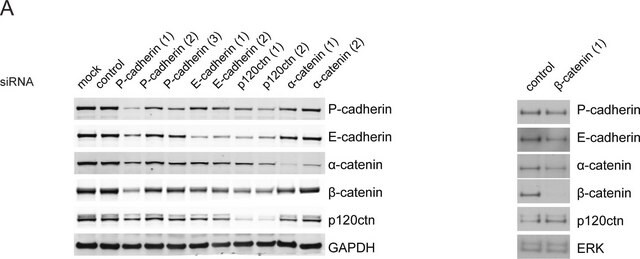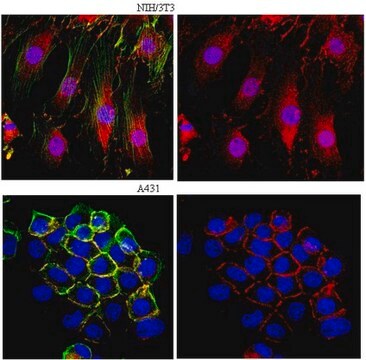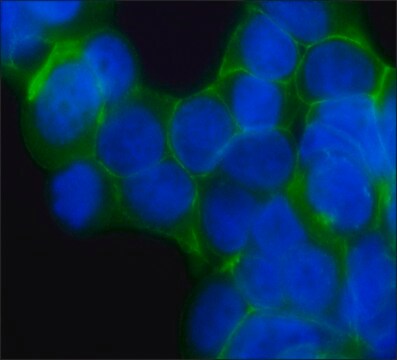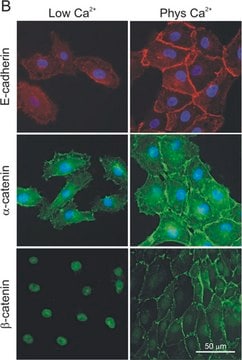C7207
Monoclonal Anti-β-Catenin antibody produced in mouse
clone 15B8, ascites fluid
Synonim(y):
Monoclonal Anti-β-Catenin
About This Item
Polecane produkty
pochodzenie biologiczne
mouse
Poziom jakości
białko sprzężone
unconjugated
forma przeciwciała
ascites fluid
rodzaj przeciwciała
primary antibodies
klon
15B8, monoclonal
masa cząsteczkowa
antigen 94 kDa
reaktywność gatunkowa
chicken, bovine, human, canine
metody
immunocytochemistry: suitable
immunohistochemistry (frozen sections): suitable
indirect immunofluorescence: 1:1000 using cultured MDBK cells
microarray: suitable
western blot: 1:1000 using cultured MDBK cells extract
izotyp
IgG1
numer dostępu UniProt
Zastosowanie
research pathology
Warunki transportu
dry ice
temp. przechowywania
−20°C
docelowa modyfikacja potranslacyjna
unmodified
informacje o genach
human ... CTNNB1(1499)
Szukasz podobnych produktów? Odwiedź Przewodnik dotyczący porównywania produktów
Opis ogólny
Specyficzność
Immunogen
Zastosowanie
- immunoblotting
- immunohistochemistry
- immunolabeling
- immunofluorescence
- immunocytochemical staining
Działania biochem./fizjol.
Postać fizyczna
Przechowywanie i stabilność
Oświadczenie o zrzeczeniu się odpowiedzialności
Not finding the right product?
Try our Narzędzie selektora produktów.
polecane
Kod klasy składowania
13 - Non Combustible Solids
Klasa zagrożenia wodnego (WGK)
WGK 1
Temperatura zapłonu (°F)
Not applicable
Temperatura zapłonu (°C)
Not applicable
Środki ochrony indywidualnej
Eyeshields, Gloves, multi-purpose combination respirator cartridge (US)
Certyfikaty analizy (CoA)
Poszukaj Certyfikaty analizy (CoA), wpisując numer partii/serii produktów. Numery serii i partii można znaleźć na etykiecie produktu po słowach „seria” lub „partia”.
Masz już ten produkt?
Dokumenty związane z niedawno zakupionymi produktami zostały zamieszczone w Bibliotece dokumentów.
Klienci oglądali również te produkty
Produkty
Cancer stem cell media, spheroid plates and cancer stem cell markers to culture and characterize CSC populations.
Nasz zespół naukowców ma doświadczenie we wszystkich obszarach badań, w tym w naukach przyrodniczych, materiałoznawstwie, syntezie chemicznej, chromatografii, analityce i wielu innych dziedzinach.
Skontaktuj się z zespołem ds. pomocy technicznej















